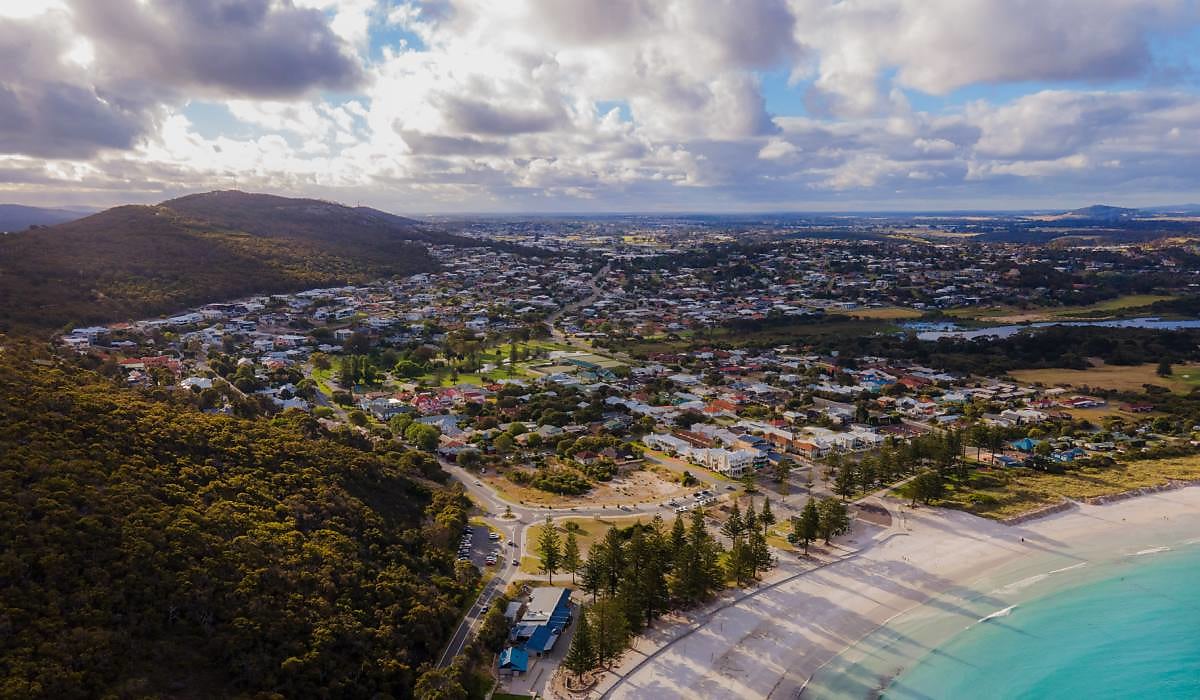Which West Australian region was a star in Q1 2023?
Despite facing rising costs and significant building delays, one West Australian regional centre emerged as the top performer during the latest quarter.

Real Estate Institute of Western Australia’s (REIWA) data showed Albany recorded a median house price growth of 2.6 per cent in the first three months of 2023, clinching the title as the state’s top-performing regional centre.
With the latest quarterly gain, the coastal market’s median house price rose from $455,000 in the December quarter to $467,000.
Joe White, the institute’s president, noted there is strong demand for properties across all price brackets in the area, with “well-presented homes priced to meet the market selling extremely quickly and attracting multiple offers”.
Surprisingly, it’s not interstate buyers snatching up the properties in the area. “[Buyers] are mainly Albany locals, with a lot of property owners looking to upgrade,” Mr White revealed
A recent report from Little Hinges showed a similar trend, with data showing buyers and renters are refraining from exploring their options interstate and instead sticking to their home turfs.
He cited reports from agents on the ground who observed “people are changing direction”, adding that “[people] may have been looking to build or extend, but are buying a near-new property instead”.
Additionally, Mr White noted Albany had performed strongly despite the challenges faced by all regional centres, including increasing costs and significant delays in building homes.
“It’s a trend in Perth, but more so in the regions where it is even harder to get tradespeople and more expensive to build,” he said.
Seven regional centres recorded price growth over the quarter, including Bunbury (up 1.2 per cent to $425,000), Busselton (up 0.5 per cent to $668,000), Esperance (2.5 per cent to $410,000 ), Kalgoorlie (1.5 per cent to $340,000), Karratha (1.9 per cent to $550,000) and Port Hedland (1.4 per cent to $464,000).
Meanwhile, the regional centres of Broome and Geraldton saw no movement in the median house price over the period at $650,000 and $370,000, respectively.
On an annual basis, the strongest performer was Busselton, the only market to record double-digit growth of 14.2 per cent. This was followed by Albany (up 9.9 per cent), Bunbury (up 6.4 per cent), Karratha (5.8 per cent), Esperance (5.1 per cent), Broome (4.8 per cent), Kalgoorlie (3.3 per cent) and Port Hedland (1.4 per cent).
The only regional centre to record a year-on-year decline in house values was Geraldton, edging down by 1.1 per cent annually.
Mr White noted buyers are pulling out all the stops when it comes to budget if it means securing their dream property.
“There is particularly strong interest in premium residential and lifestyle properties around $1 million, with all enquiries for a recent near-$3 million listing in Middleton Beach coming from local buyers so far,” he said.
Despite the strong market demand, Mr White acknowledged the rate of price growth had been slowing across the state.
On the upside, he echoed REIWA chief executive Cath Hart’s observation that the local market continues to cut a resilient figure amid the rate hike headwinds.
“Like Perth, regional markets are holding firm in the face of numerous interest rate rises.
“Buyers have adjusted their budgets and expectations. They are seeking value, and sellers who price their properties to meet the market are selling in reasonable time frames,” he stated.
Regional rental markets a mixed bag of results
When it came to the rental market, Mr White noted the “results were mixed”.
Albany saw the largest increase in median weekly rent compared to the other five centres that experienced a rise in prices during the quarter, with a three-month gain of 15.4 per cent. This brought the median rent price in the coastal market to $450 per week.
“The rental market remains very tight in Albany,” Mr White said.
He explained it all boils down to a problem of supply, with no notable increase in the number of properties available for rent in the market.
“Investors have been selling, and not many have been buying over the past year,” he stated.
Other regional centres to notch growth during the period were Karratha (up 6.3 per cent to $850), Bunbury (5.1 per cent), Broome (up 3.3 per cent to $930) and Esperance (1.5 per cent).
Meanwhile, three regional markets, including Busselton (down 1.6 per cent to $630), Geraldton (down 5.3 per cent to $360) and Port Hedland (down 5.6 per cent) saw declines in median rent, while Kalgoorlie was unchanged at $550 per week.
Mr White underlined the supply crunch is not unique to Albany. “It’s a problem seen across most of the state, and the lack of supply, coupled with strong demand, is pushing rent prices up,” he said.
And while “there’s a lot of debate about rental reforms at the moment”, Mr white highlighted the “big question” for evaluating housing policy is whether it will boost supply.
Notably, while the first full-year budget of the Albanese government delivered by Federal Treasurer Jim Chalmers was lauded for being loaded with schemes targeting housing relief, some experts believed it failed to hit the mark on the crux of the issues plaguing the housing market — including rental supply and affordability.
“The feedback from investors is that proposed rental reforms won’t do that and will, in fact, have the opposite result. This would just add to the woes tenants are facing currently,” Mr White concluded.
